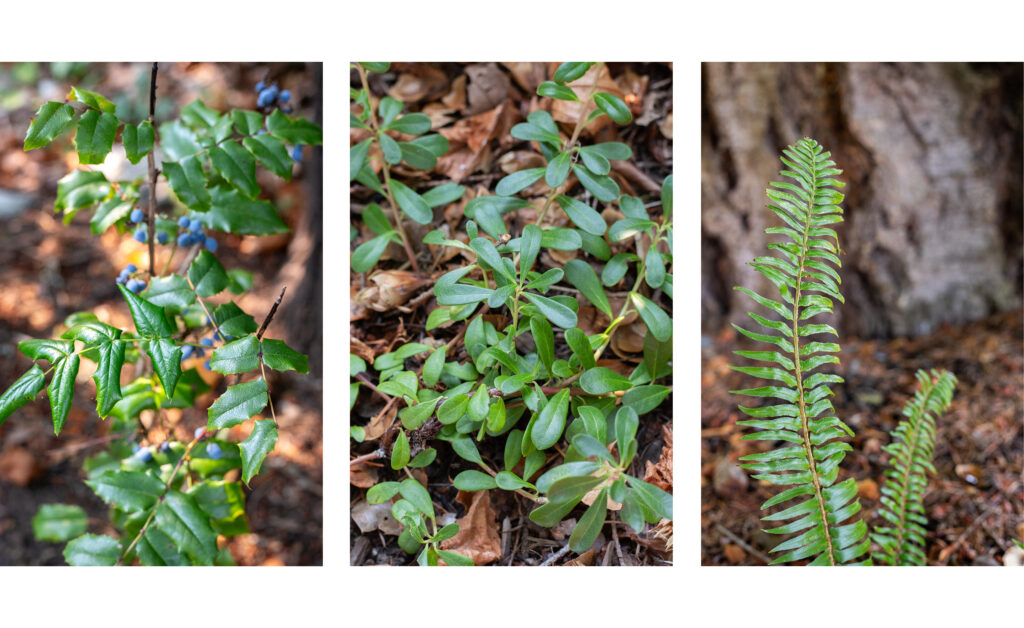story and photos by Kathryn Alvarez –
An ideal garden for many people is one that is attractive, low-maintenance and drought-tolerant, with plants that attract bees, butterflies and birds. To achieve this, some of the best plant choices are native plants – species that were here before the European colonization of the Salish Sea bioregion and which have evolved to thrive in this area. Whether you have a large or small garden, or a few pots on a patio, native plants can be easily incorporated into your garden space.
Benefits of using native plants in your garden are:
- they need little to no watering beyond normal rainfall once they have been established
- they don’t require fertilizers, herbicides or pesticides as they have developed their own defenses against pests and diseases
- they create habitat and food sources for local beneficial insects and wildlife (some wildlife depend on particular native plants for food)
- they are a sustainable alternative to non-native and invasive species; and
- they require little maintenance because they are already adapted to the local environment.
Some well-known native plants that can be found at nurseries and garden centres around the Peninsula are:
Oceanspray. This shrub thrives in poor soils, drought and salt spray, and attracts seed-eating birds.
Tall Oregon Grape. This shrub – with glossy leaves, edible berries and yellow flowers – does well in full sun and well-drained soil.
Gummy Gooseberry. This spiny shrub with fuchsia-like flowers (loved by hummingbirds) can be used as a privacy hedge.
Red Flowering Currant. This shrub has beautiful red flowers in the spring and delicious berries in the fall.
Sword Fern. This hardy fern, which can grow up to two to three feet tall, thrives in partial sun and shade.
Wooly Sunflower. This light green-leaved perennial with bright yellow flowers in summer is loved by bees and butterflies.
Nodding Onion. This member of the allium family (alongside onion and garlic) handles salt spray, wind, drought and poor, gravelly soils.
False Lily of the Valley. This low, shade-loving ground cover has small, white perfumed flowers and red and gold berries in the fall.
Kinnikinnik. This trailing evergreen ground cover has early-blooming flowers in spring and red berries in winter for birds.
Choosing the right plant for each place in your garden is important for plants to survive and thrive. Plants that are well suited to their particular site will establish quickly, have a healthy root system, and be healthier plants, so be sure to check the sun exposure and soil conditions that each plant requires before installing.
Start small and install native plants in your existing ornamental garden, or in their own naturescape, with plenty of mulch during the fall rains, usually late September to October. (Remember: Do not take native plants from the wild as it can harm natural habitats.) This will help them get a head start on becoming established before the summer heat and drought arrives. Many native plants do wonderfully in containers, too.
Native plants are beautiful, low-maintenance and hardy species to incorporate into your garden space to create an attractive ecosystem for you, and the wildlife that depends on them, to enjoy.
Sources: Capital Regional District: Gardening with Native Plants
Garry Oak Ecosystem Recovery Team: The Garry Oak Gardener’s Handbook




